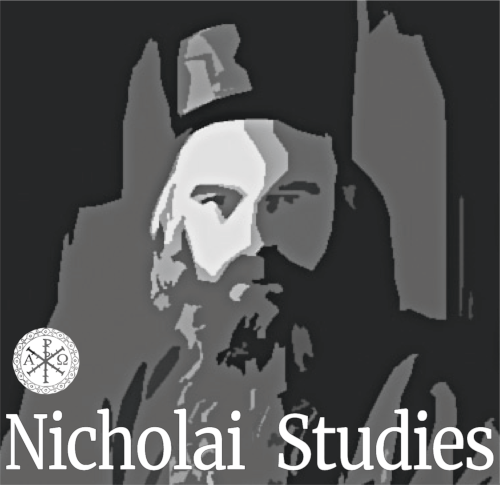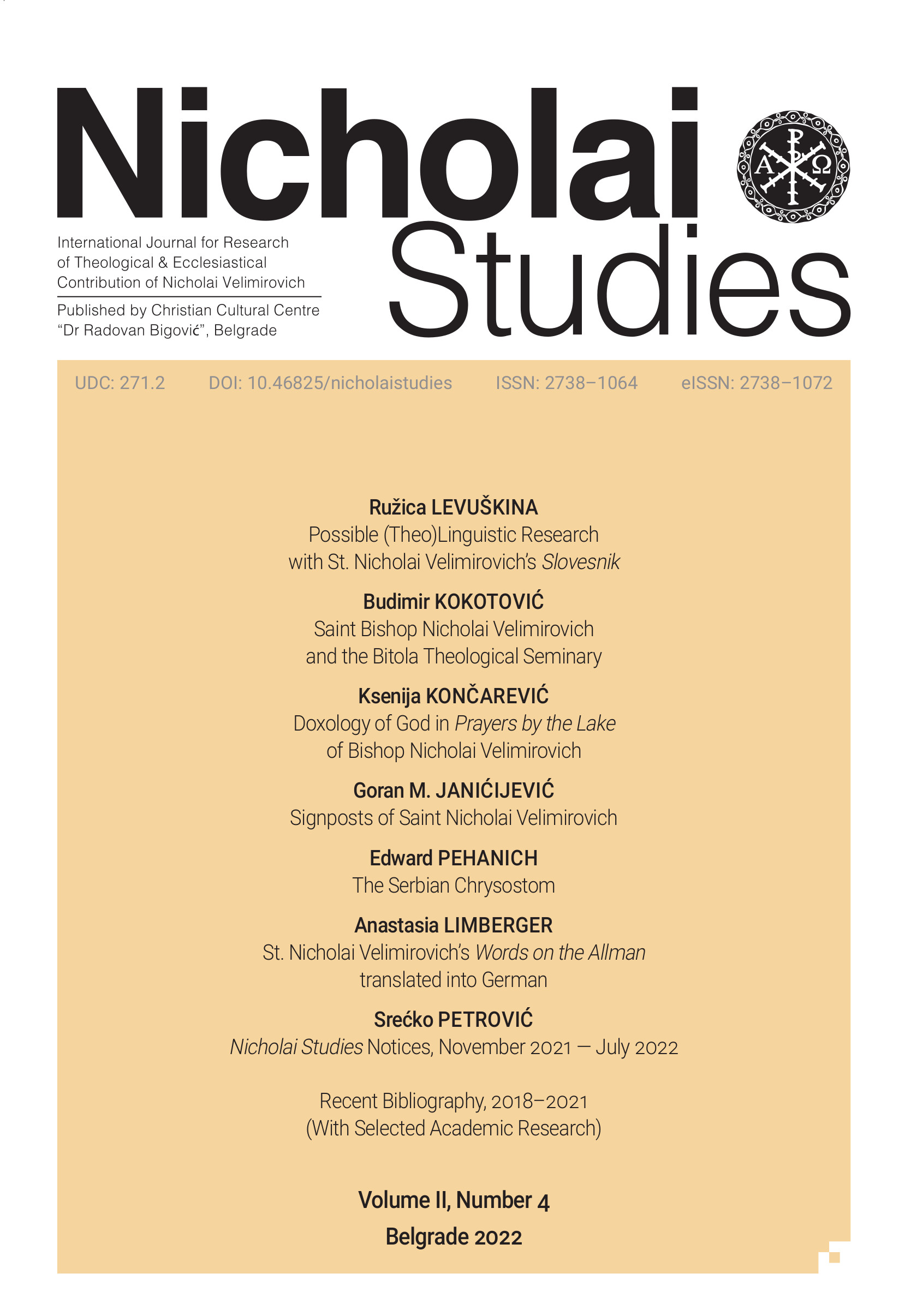This paper describes the manuscript of St. Nicholai Velimirovich named Slovesnik which was published as a book in 1997. It was written in the fourth or at the beginning of the fifth decade of the 20th century and is addressed to nuns of certain Serbian monasteries — spiritual daughters of Bishop Nicholai. There is poetry and prose, there are documents, memorials, historical and hagiography texts, miniatures, drawings, etc. in the manuscript. All of that was written and drawn with warm paternal love. As for poetry, there are hagiography texts: Canon to the Most Holy Theotokos Slovesnica, Troparion and Kontakion to St. Georgios, the poem Zidanje Vraćevšnice [Building of Vraćevšnica] — written as an epic folk song, and lyrical songs. Almost in every text, Church Slavonic and contemporary Serbian interfere. In several places in the manuscript, the text in Church Slavonic is translated into Serbian next to the original, so we can find two parallel texts. Linguistically, this interference between two languages is interesting, not only in the lexical and translational sense, but also graphically: St. Bishop Nicholai used not only old letters in the text in Serbian, but also diacritical signs, especially ~ on the letter(s).
The basic directions of the (theo)linguistics research provided by the texts from this manuscript is the research in the fields of genre, translation, phonetic-phonology, lexical-semantic, derivation, stylistics, discourse, or text, and paremiology. The importance of the described edition for research in the field of pragmatics has to be especially emphasized. Pragmatics has a big research potential, as was said by Jean-Paul van Noppen — the founder of the term theolinguistics. He wrote that it is important “to delineate not only the semantics, i.e. what the words mean — what they describe, report, reflect and conjure up, but also the pragmatics, i.e. what the words do for people (which includes shaping their cognition)” (van Noppen 2011, 33). If we keep in mind who Saint Bishop Nicholai is addressing to in this manuscript (nuns, his spiritual daughters) — we have to state that this is an addressee who is very rarely in such a role. It is not easy to study communication in monasteries because the spiritual life of the monastic community is usually closed for observation, especially to linguists. Therefore, this edition has additional value as research material.
Deeper and more detailed linguistic research of the texts briefly described in this paper will show and open some other directions and approaches of (theo)linguistic research. By all these approaches, mentioned and not mentioned in this paper, we hope, that both theolinguistics and linguistics, in general, can be enriched, as well as, in the first place, studies of contemporary Serbian language (Serbistics).




